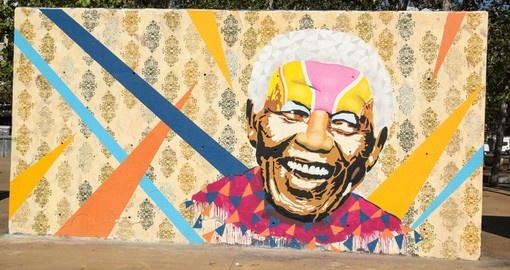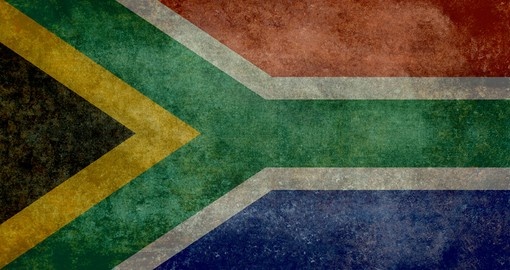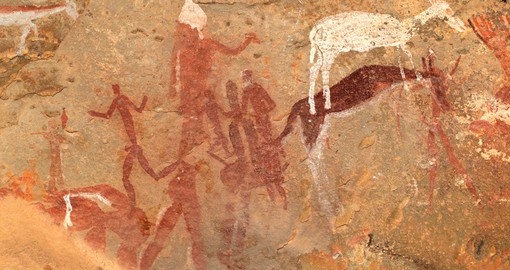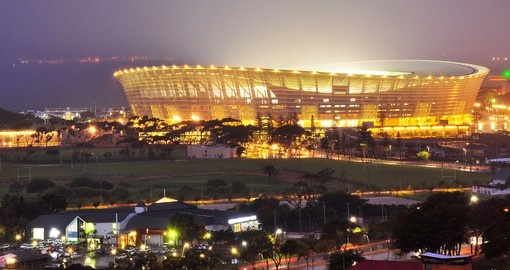South Africa History
South Africa is home to some of the oldest archaeological and human fossil sites in the world. Caves located about 50 km northwest of Johannesburg have been nicknamed “The Cradle of Humankind” because they have produced some of the oldest hominid fossils ever found with some dating as far back as 3.5 million years ago. The earliest known humans in the area were the San and Khoikhoi peoples who were known collectively as Khoisan people. Bantu-speaking groups were next to occupy the territory and were residents of South Africa for thousands of years before they were recorded in written history.
By the 17th century, European powers were competing for colonial control, many choosing to settle in the Cape. The Dutch East India Company arrived in 1652, establishing a fort. Governors of the Cape Colony began to encourage the immigration of white settlers. The second half of the 18th century witnessed many Dutch, German and French colonists trading in their European identities for Afrikaner identities.
Beginning in 1806, the Cape Colony came under British rule, leaving much of the Boer population frustrated. They left the Cape, moving into the interior on what it knew as “The Great Trek”. On their journey, they discovered what they thought were many deserted pastures that were actually the result of forced migration imposed by Shaku, a Zulu king. As time passed, tensions grew, culminating in the Battle of Blood River in 1838. More than 3,000 Zulus were killed reportedly causing the Ncome River to run red. The Boers, as victors, felt they had been given a sign of divine approval to continue their expansion.
The Union of South Africa was established in 1910 and the first government was generally pro-British and white unity. Repressive legislation was passed prohibiting black populations from striking or holding skilled jobs. The Natives Land Act of 1913 set aside 8% of the total land area for the entire black population. These actions would set the tone for the next eighty years in South Africa.
Individuals were classified by race and the Group Areas Act resulted in the physical separation of residential areas by race. The Separate Amenities Act created separate public facilities, buses, schools and even park benches. The black population of South Africa was forced to carry ID papers at all times. The 1960s witnessed the creation of the Republic of South Africa as well as the life imprisonment of Nelson Mandela, one of the most influential players in the anti-apartheid movement, in 1964. During the 1970s, the government devised a plan to create “Homelands” which were to house the black population. People could not leave the Homelands without passes and permission.
International pressures began to mount in the 1980s and economic sanctions were imposed. The value of the rand collapsed and by 1985, the country was in a state of emergency that would last for the next five years. The media remained heavily censored and by 1988, approximately 30,000 people had been detained without trial, and many had been tortured. In late 1989 things began to change when FW de Klerk became president. He set about repealing discriminatory laws, lifted media restrictions and many political prisoners were released, including Mandela.
Nobel Peace Prizes were bestowed upon de Klerk and Mandela in 1993 for their enduring commitment to ending apartheid. Between 1990-91, virtually all apartheid regulations had been repealed. In April 1994 history was made with the country’s first democratic elections which the African National Congress won, with Nelson Mandela as president. A Truth and Reconciliation Commission was established from 1994 through 1999 with the goal of exposing the crimes of the apartheid era.
South Africa has come a long way since apartheid, yet there is still much to do. The country is not immune to the problem of HIV/AIDS and poverty that plague many African nations, however, there is an optimism in South Africans that suggests their future is a bright one. One only has to look to the 2010 World Cup to see the nation’s ability to come together, working towards a common goal. Over 1.4 million people visited during the tournament which truly showcased this unique country and its equally unique population.
South Africa Travel Information
At Goway we believe that a well-informed traveller is a safer traveller. With this in mind, we have compiled an easy-to-navigate travel information section dedicated to South Africa.
Learn about the history and culture of South Africa, the must-try food and drink, and what to pack in your suitcase. Read about South Africa's nature and wildlife, weather and geography, along with 'Country Quickfacts' compiled by our travel experts. Our globetrotting tips, as well as our visa and health information, will help ensure you're properly prepared for a safe and enjoyable trip. The only way you could possibly learn more is by embarking on your journey and discovering South Africa for yourself. Start exploring… book one of our South Africa tours today!
Extend Your Stay
After your South Africa vacation, why not consider one of Goway's Europe tours or Egypt tours en route from South Africa or perhaps a stopover in Dubai on one of our United Arab Emirates tours.
Book your South Africa vacation with Goway!
 AfricaExperts is the exclusive division of Goway that specializes in planning and organizing South Africa tours and experiences. Choose from a simple city stopover, an exclusive African game lodge, a Holiday of a Lifetime, a stay of distinction, a self-drive tour and more. We want to be your first choice when next you go globetrotting to South Africa.
AfricaExperts is the exclusive division of Goway that specializes in planning and organizing South Africa tours and experiences. Choose from a simple city stopover, an exclusive African game lodge, a Holiday of a Lifetime, a stay of distinction, a self-drive tour and more. We want to be your first choice when next you go globetrotting to South Africa.
Get a Trip Quote Order a Brochure





















